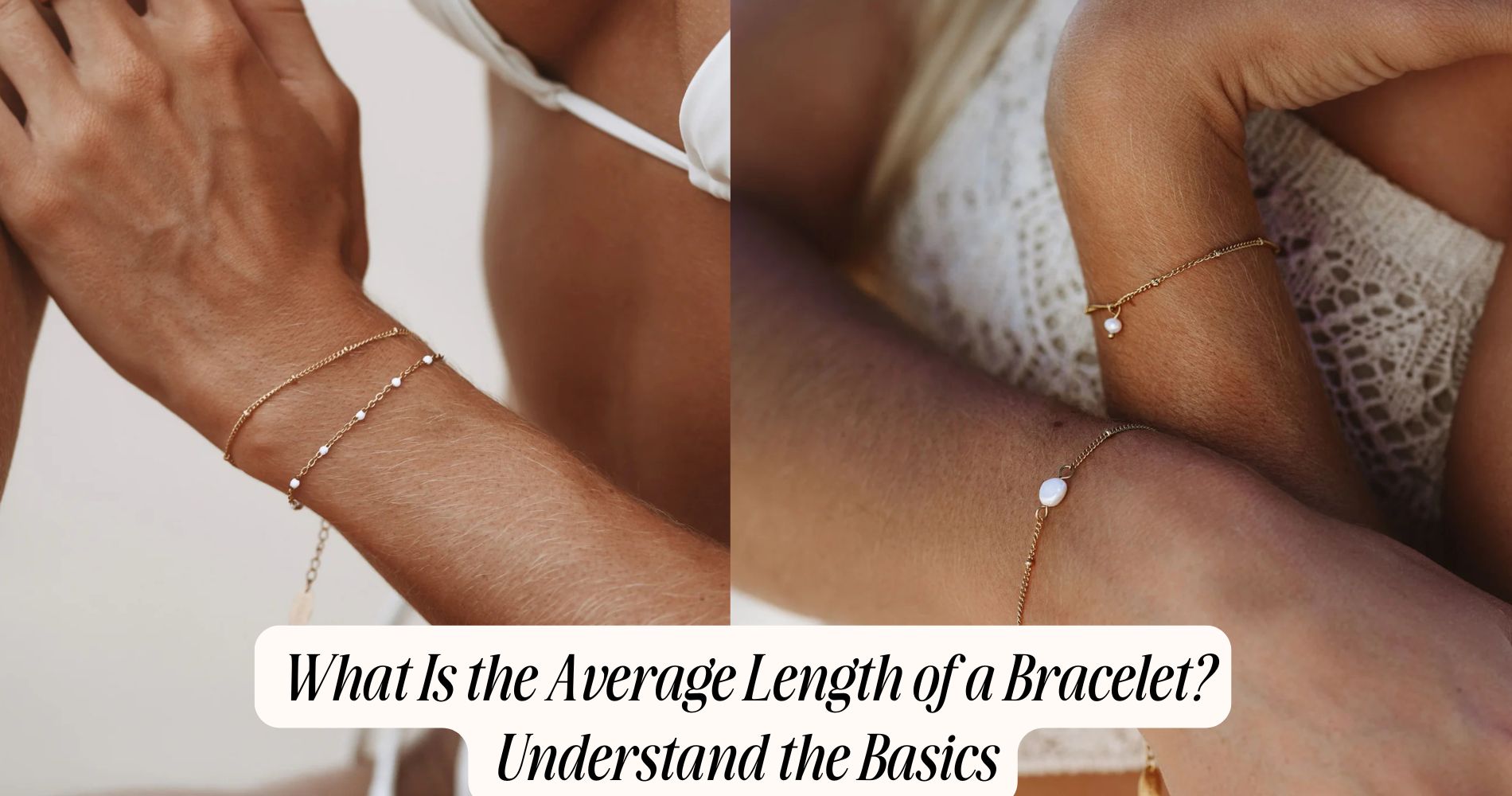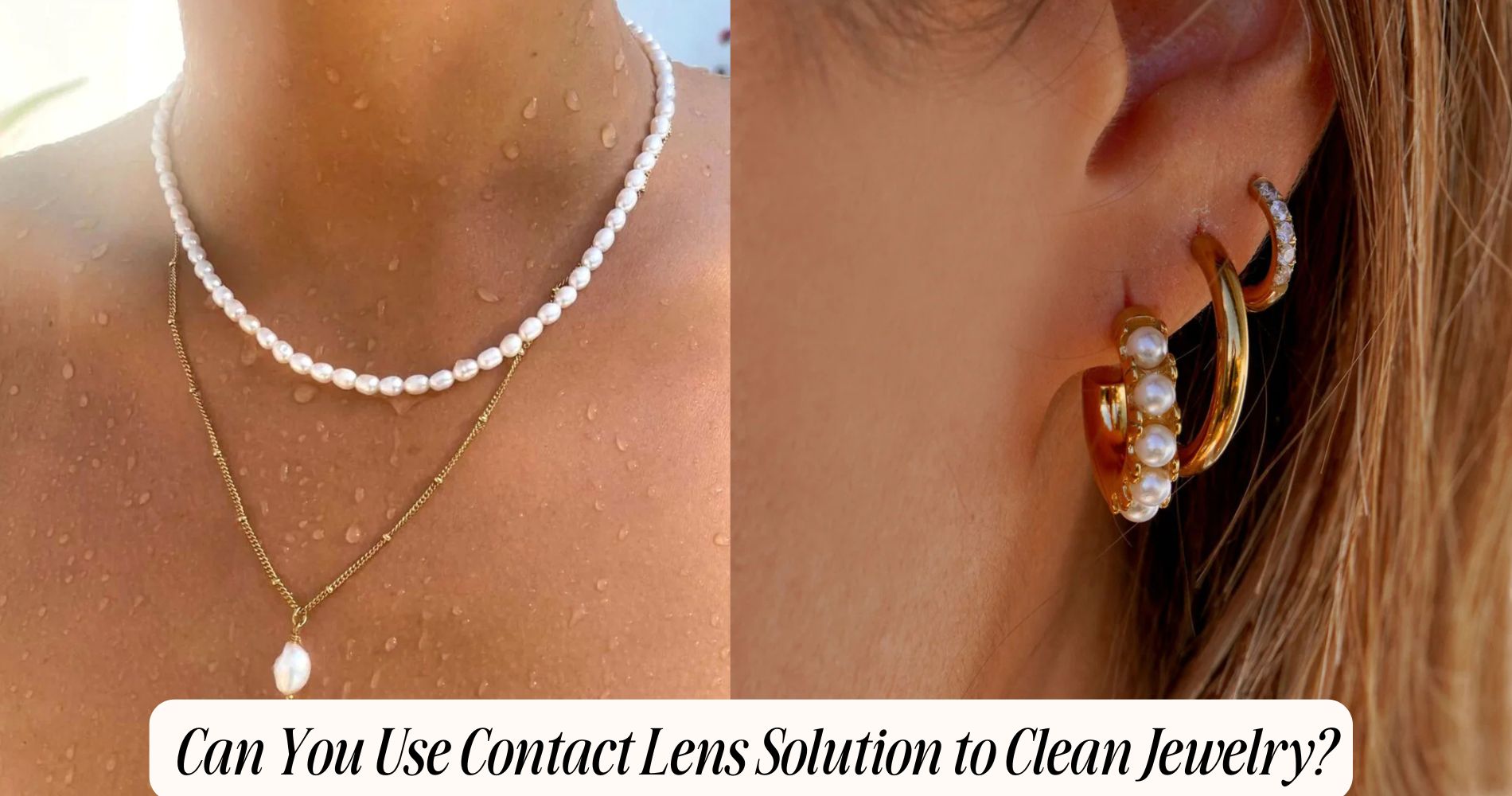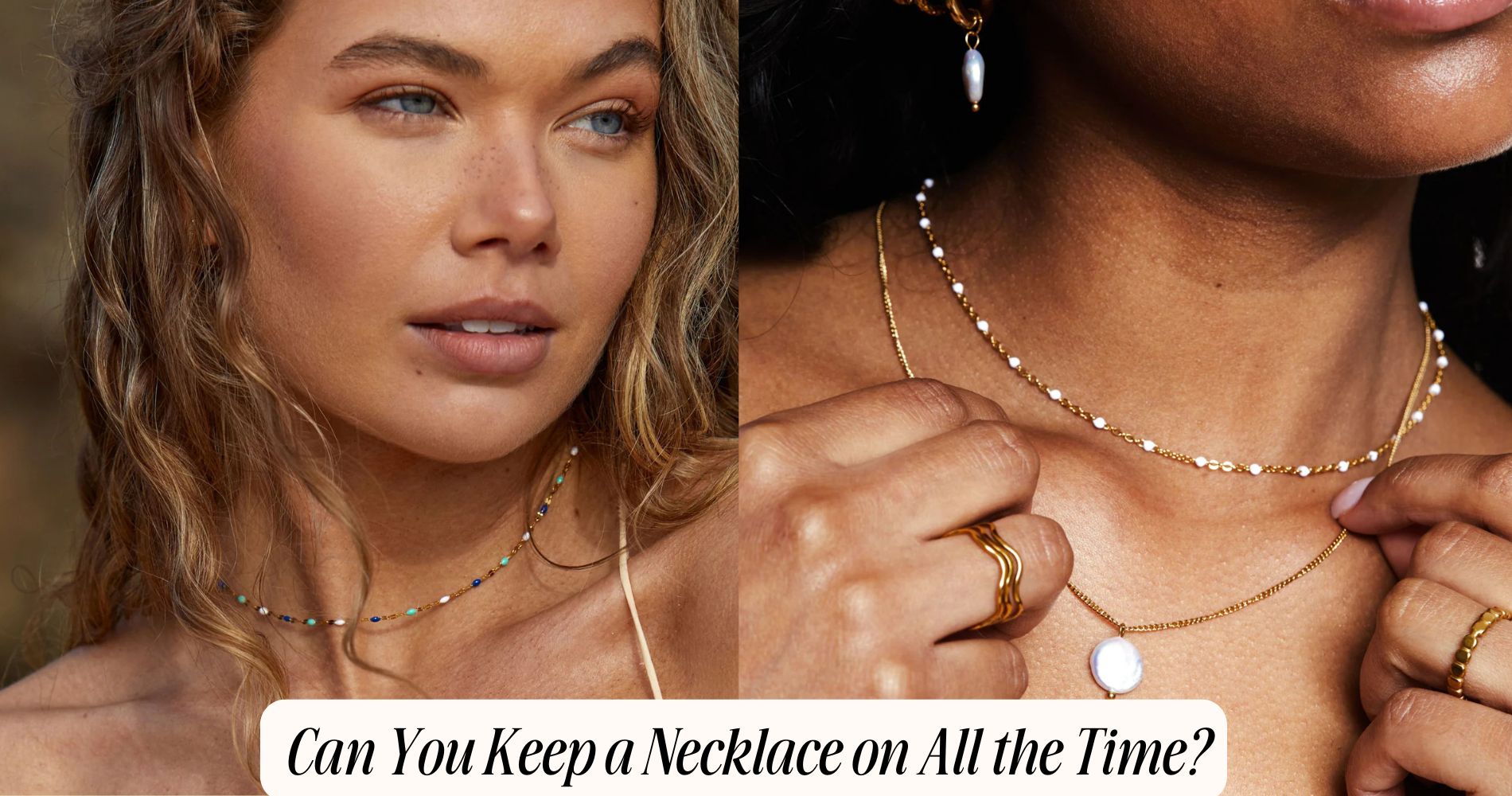
What Is the Average Length of a Bracelet? Understand the Basics
What is the average length of a bracelet? It varies depending on individual demographics and preferences. For women, the typical bracelet length ranges from 7 to 7.5 inches, while men often prefer sizes between 8 to 9 inches. Children's bracelets usually fall between 5 to 7 inches. When choosing the right size, comfort is key—a snug fit adds style without restricting movement. Whether you're selecting bangles, chain styles, or other types of bracelets, slight adjustments may be needed to achieve the perfect fit. Discover more sizing tips and explore our Everyday Bracelets collection for versatile options suitable for any occasion.
Importance of Bracelet Length
When it comes to choosing the right bracelet, understanding the importance of bracelet length is essential for both comfort and style. The length directly influences how the bracelet will fit on your wrist, which can greatly impact your overall look. A bracelet that's too tight can be uncomfortable and may even restrict your movement, while one that's too loose can slip off or get caught on objects, detracting from your personal style.
In the area of fashion trends, the right length can enhance your outfit and complement your unique aesthetic. For instance, layering bracelets of varying lengths can create a chic and trendy appearance. If you're looking to make a statement, an oversized cuff can serve as a bold focal point. Conversely, a delicate chain can add subtle elegance to your ensemble.
Moreover, understanding your wrist size helps you select a length that not only aligns with current fashion trends but also harmonizes with your personal style.
Always consider how a bracelet's length interacts with your clothing, as certain lengths can accentuate or detract from your overall fashion statement.
Ultimately, the right bracelet length elevates your style and guarantees comfort throughout the day.
Average Length for Women
The average bracelet length for women typically ranges from 7 to 7.5 inches. This measurement can vary based on several factors, including the specific bracelet styles you prefer and the fit you're aiming for.
For instance, if you enjoy looser styles, you might opt for a length on the higher end of that spectrum. Conversely, if you prefer a snug fit, a bracelet closer to 7 inches might be ideal.
To guarantee you're selecting the right size, always refer to sizing charts provided by the jeweler or retailer. These charts offer precise measurements and can assist you in determining your ideal bracelet length.
Additionally, consider the type of closure or clasp on the bracelet, as this can affect the overall fit.
When shopping for bracelets, keep in mind that different materials and designs can also influence how a bracelet feels on your wrist. Be sure to try on various styles to find what feels most comfortable.
Ultimately, knowing the average lengths and using sizing charts will help you make informed decisions, guaranteeing you find a bracelet that complements your personal style perfectly.
Average Length for Men
Although preferences vary, the average bracelet length for men typically falls between 8 to 9 inches. When choosing a bracelet, it's crucial to take into account not just the length but also how it aligns with your personal style and comfort.
Different bracelet styles, such as leather cuffs, beaded designs, or metal links, can influence the fit. For instance, a leather bracelet might feel snugger than a metal one due to its material.
To find your ideal length, measure your wrist with a soft tape measure. Add about half an inch to an inch for a comfortable fit that allows for movement without being too loose.
Remember, the right bracelet can enhance your overall men's fashion, making a statement whether you're dressing casually or formally.
Moreover, if you're planning to layer multiple bracelets, keep that combination in mind when selecting sizes. Mixing and matching different bracelet styles can create a unique look, but maintain proportions to ensure balance.
Ultimately, the goal is to find a length that feels right for you while complementing your wardrobe.
Average Length for Children
While selecting a bracelet for children, it's important to take into account their age and wrist size, as the average length typically ranges from 5 to 7 inches.
To guarantee a proper fit, you should start by measuring your child's wrist. Use a flexible measuring tape or a piece of string, wrapping it around their wrist and marking where it overlaps. Once you have the measurement, you can compare it to standard sizes to find the best match.
When considering children's bracelet styles, keep in mind that preferences can vary greatly. Younger children may prefer colorful, playful designs, while older kids might lean towards more sophisticated options.
Make sure to choose a style that reflects their personality while guaranteeing comfort and wearability.
It's also good to remember that children's wrists grow quickly, so opting for a slightly adjustable bracelet can be beneficial. This way, it can accommodate their growth and last longer.
Types of Bracelets and Sizes
When choosing a bracelet, it's crucial to understand the different types available, such as bangles, cuffs, and charm bracelets.
Each type has its own unique style and sizing considerations, which can affect how it fits on your wrist.
Knowing how to measure your bracelet size accurately guarantees a comfortable and flattering fit for any design you choose.
Common Bracelet Types
Bracelets come in various styles, each designed to cater to different tastes and occasions. You might find beaded bracelets that offer a playful, colorful touch, often made from vibrant stones or glass beads.
Charm bracelets, on the other hand, allow you to personalize your look by adding charms that represent special memories or interests.
If you prefer something rugged, leather bracelets provide a durable, stylish option that can be worn casually or dressed up.
Cuff bracelets make a strong statement with their open design, often crafted from metal or adorned with intricate details.
Bangle styles are also popular, typically worn in stacks for a bold effect.
Friendship bracelets carry sentimental value, often handmade and given as tokens of affection.
For those who appreciate a modern twist, metal bracelets with sleek designs can add an elegant finish to any outfit.
Finally, woven designs offer a unique texture and can be made from various materials, adding depth to your accessory collection.
With so many options available, choosing the right bracelet type can elevate your style and express your individuality.
Measuring Bracelet Size
To guarantee a perfect fit for your bracelet, it's crucial to accurately measure your wrist size, as different bracelet styles require varying lengths.
Start by using a flexible measuring tape or a piece of string. Wrap it snugly around your wrist, just above the wrist bone, where you'd typically wear the bracelet. If you're using string, mark the spot where it overlaps and then measure the length with a ruler.
Once you have your measurement, consult sizing guides specific to the bracelet styles you're interested in. For instance, bangles usually need to be a bit larger than your wrist size to slip on comfortably, while chain bracelets often fit more closely.
If you're considering a cuff bracelet, remember that it should feel secure but not too tight.
Keep in mind that if you prefer a looser fit, add an extra half-inch to your measurement. Similarly, if you like a tighter fit, subtract half an inch.
Measuring Your Wrist Correctly
Many people overlook the importance of measuring their wrist accurately, but it's essential for finding the perfect bracelet fit. Start by determining your wrist circumference, as this measurement is vital for ensuring comfort. You can use a flexible measuring tape or a piece of string to do this. Wrap the tape or string around the widest part of your wrist, making sure it's snug but not too tight.
Once you have the measurement, mark where the string overlaps or take note of the measurement on the tape. If using a string, measure it against a ruler for precision. This method is one of the most straightforward sizing techniques you can use.
For the best results, measure your wrist at different times of the day, since your wrist size can fluctuate slightly due to factors like temperature and activity level. Remember to take a few measurements to find an average, ensuring you account for these variations.
Knowing your wrist circumference will help you choose the right bracelet size, whether you prefer a snug fit or a looser style. Accurate measurements are key to achieving a comfortable and stylish bracelet fit.
Adjusting Bracelet Sizes
When adjusting bracelet sizes, it's essential to start with an accurate measurement of your wrist.
If your bracelet feels too tight or loose, consider adding extenders or links to achieve the perfect fit.
These adjustments not only enhance comfort but also guarantee your bracelet looks its best.
Measuring Wrist Size
Measuring your wrist size is essential for finding the perfect bracelet fit. Accurate wrist measurements guarantee comfort and style, allowing you to enjoy your accessory without it feeling too tight or loose.
To start, you can use several wrist measurement techniques. The most common method involves using a flexible measuring tape. Simply wrap it around your wrist, making sure it's snug but not constricting. Note the measurement where the tape overlaps.
If you don't have a measuring tape, you can use a piece of string or ribbon. Wrap it around your wrist and mark the point where it meets. Then, measure the length against a ruler.
Keep in mind that wrist size variations can occur depending on factors like time of day, temperature, and physical activity. It's a good idea to measure your wrist at different times to get an average size.
Once you've determined your wrist size, you can confidently choose a bracelet that complements your style and fits well. Remember, a well-fitted bracelet enhances your overall look and provides comfort throughout the day.
Adding Extenders or Links
If you find that your bracelet is a bit too snug or loose, adding extenders or links is a great way to adjust its size for a better fit. Extenders are small chains or pieces that attach to the clasp, allowing you to increase the bracelet's length easily. They come in various extender options, typically ranging from one to three inches, giving you flexibility in achieving that perfect fit.
On the other hand, link styles provide another way to customize the length. You can add or remove links from the bracelet itself, which is especially common in charm or chain bracelets. This method is more permanent than using extenders, but it allows for a more tailored look.
When selecting extenders or link styles, consider the material and design of your bracelet to guarantee a cohesive appearance. Gold, silver, or leather extenders can match beautifully with your existing piece.
Comfort vs. Aesthetics
Balancing comfort and aesthetics in bracelet design is essential for a satisfying wear experience. When you're selecting a bracelet, you need to weigh comfort considerations against your aesthetic preferences. A bracelet that looks stunning mightn't provide the comfort you desire if it's too tight or made from rough materials.
To guarantee a pleasant fit, focus on the bracelet's sizing and adjustability. A well-fitted bracelet allows for a little movement on your wrist without sliding off or feeling constricting.
Consider how the design elements, such as clasps and embellishments, impact comfort. Sharp edges or heavy charms can lead to irritation over time.
Simultaneously, don't neglect your style. You're likely drawn to certain designs, colors, and materials that reflect your personality and fashion sense.
However, remember that an uncomfortable bracelet can detract from your overall enjoyment of wearing it. Aim for a piece that meets both your comfort considerations and aesthetic preferences.
Ultimately, the perfect bracelet should harmonize style and wearability, allowing you to express yourself while feeling at ease throughout the day.
Choosing the Right Material
When choosing a bracelet, the material you select plays a vital role in both its appearance and durability.
Popular options like gold, silver, leather, and fabric each offer unique benefits and challenges that can affect your decision.
Understanding these materials and their durability factors will help you make an informed choice that suits your style and lifestyle.
Common Bracelet Materials
Choosing the right material for your bracelet is essential, as it can greatly affect both its appearance and durability. When considering common bracelet materials, you'll encounter various bead materials and metal types that each offer unique characteristics.
For bead materials, options like glass, wood, and gemstones are popular. Glass beads can deliver vibrant colors and intricate designs, while wooden beads offer a natural, earthy feel. Gemstones, on the other hand, provide elegance and can hold metaphysical properties, making them a favorite for personalized bracelets.
When it comes to metal types, you'll find a range from stainless steel to sterling silver and gold. Stainless steel is highly durable and resistant to tarnish, making it a practical choice for everyday wear. Sterling silver, known for its lustrous finish, adds a classic touch, while gold offers timeless luxury and can be found in various karats and styles.
Ultimately, your choice of material should reflect your personal style and intended use. Consider how each material complements your wardrobe and lifestyle, ensuring your bracelet not only looks great but also stands the test of time.
Material Durability Factors
Durability plays an essential role in selecting the right material for your bracelet, as it directly impacts how well the piece withstands everyday wear and tear. When choosing a bracelet, consider factors such as material strength and wear resistance.
Stronger materials, like stainless steel or titanium, offer excellent durability, making them ideal for everyday use. These metals resist scratches and dents, ensuring your bracelet remains in pristine condition over time.
Alternatively, if you prefer a more delicate look, consider materials like sterling silver or gold. While they've a certain elegance, they may not provide the same level of wear resistance as their sturdier counterparts. That said, proper care can help mitigate scratches and maintain their beauty.
Another option is leather, which can offer a rugged charm, but its durability largely depends on the quality of the leather and how it's treated. High-quality leather can withstand daily use, while lower-quality options may wear down quickly.
Ultimately, the right choice hinges on your lifestyle and how often you plan to wear the bracelet. By understanding these material durability factors, you can select a bracelet that combines style and longevity.
Tips for Gift Sizing
Finding the right size for a bracelet gift can be a bit tricky, but with some helpful tips, you can guarantee a perfect fit. Start by discreetly asking the recipient about their bracelet preferences. If they wear bracelets regularly, you can check the size of one they already own. Measure it against a ruler to find the length, then add about half an inch for comfort.
If you're unsure about their size, consider choosing an adjustable bracelet. This option allows for flexibility and accommodates different wrist sizes. Additionally, think about the recipient's personal preferences regarding style, whether they like something more fitted or with some extra room.
When it comes to gift wrapping, remember that a beautifully wrapped gift can enhance the entire experience. If you're concerned about sizing, include a thoughtful note suggesting they can exchange it for a different size if needed.
This way, they'll feel comfortable and appreciated. Ultimately, putting in the effort to understand their preferences will make your gift even more special. With these tips, you can confidently select a bracelet that they'll love and cherish.
Frequently Asked Questions
What Are Common Bracelet Styles and Their Typical Lengths?
When exploring common bracelet styles, consider fashion trends like bangles, cuffs, and charm bracelets. A sizing guide typically recommends lengths ranging from 6 to 8 inches, ensuring a comfortable fit for various wrist sizes.
How Does Bracelet Length Vary by Different Cultures?
Bracelet length varies considerably across cultures, reflecting cultural significance and traditional materials. For instance, Indigenous tribes may use specific lengths for ceremonial purposes, while other cultures might favor longer styles for fashion or symbolism, enhancing personal expression.
Can Bracelet Length Affect Its Durability or Lifespan?
Yes, bracelet length can affect its durability or lifespan. Shorter bracelets often experience less strain, while longer ones may stretch or break more easily, especially depending on the materials used. Consider the length impact when choosing.
Are There Standard Sizes for Charm Bracelets?
Yes, there are standard sizes for charm bracelets, typically ranging from 6.5 to 8.5 inches. Charm bracelet sizing may vary based on the materials used, affecting how the charms hang and the overall look.
What Are the Best Ways to Store Bracelets?
To effectively store your bracelets, consider using jewelry boxes with compartments, hanging organizers, or dedicated bracelet displays. These storage solutions enhance bracelet organization, preventing tangling and damage while keeping your collection easily accessible and visually appealing.
Conclusion
In summary, understanding bracelet lengths is essential for both comfort and style. Whether you're selecting an average size for women, men, or children, or adjusting for a perfect fit, keep in mind the type of bracelet and material used. Prioritizing comfort while considering aesthetics can enhance your overall experience. If you're gifting a bracelet, take the recipient's wrist size into account to guarantee a thoughtful choice. With these tips, you'll confidently choose the ideal bracelet for any occasion.
























Leave a comment
This site is protected by hCaptcha and the hCaptcha Privacy Policy and Terms of Service apply.